of smartagrihubs
The magnitude
140
Digital Inovation Hubs
9
Regional
Clusters
5
Sectors
28
Flagship
Innovation
Experiments
Flagship Innovation Experiments
In the spotlight
Smart Pig Health
What does this have to do with digitisation you might ask? Let us explain: there is an increasing demand for the reduced use of antibiotics, for improved animal welfare and for transparency on the conditions in which our food is being produced. We provide a solution by observing pigs.
North-west europe
Vineyard mower robot
All members in this team love good wine. Maybe that’s why we work together in this FIE where we develop an autonomous mower for vineyards. Such a robot mower is a necessary solution because chopping and mulching between vine rows is an important task, but also a repetitive and monotonous one prone to mistakes.
central europe
autonomous greenhouses
If greenhouse growers water young plants a little too much, they might develop fungal diseases. The cultivation of exotic vegetables, fruits and flowers in greenhouses is a very delicate task and growers sometimes lack sufficient knowledge to execute this task effectively.
North-east Europe
aquaculture
Imagine being a fish farmer in Italy on the Adriatic coast. After a day of hard work, you can finally visit the café and share tales with your friends when suddenly your smartphone buzzes – an app notifies you that the quality of water in your fish farm has drastically deteriorated...
italy & Malta
grain value chain
How can we trust that the cereals we buy were produced in a sustainable manner? Both consumers and farmers struggle with this question. Consumers ask for increased transparency, whilst farmers desire fair prices to increase their profitability. Furthermore, farmers struggle with low profitability of such...
Scandinavia
Regional Cluster RC North West Europe
Sector Livestock
Product pig health prediction model
End user Pig farmers
FIE contact Hubert Gerhardy
msg.garbsen@t-online.de
Partners Marketing Service Gerhardy, VzF e.V., Mitteldeutsche Agentur für Informationsservice, Landwirtschaftskammer Niedersachsen, innoSEP GmbH
Something funny This FIE is able to listen and speak to pigs
Social media @innosepgmbh
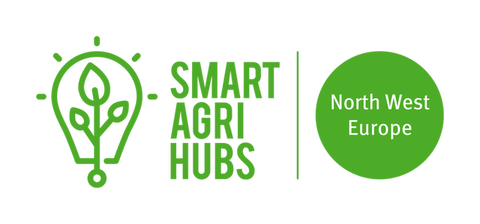

Detecting coughing pigs
Some people say they hear the grass growing - at SmartPigHealth (FIE 22) we speak with and listen to pigs.
What does this have to do with digitisation you might ask? Let us explain: there is an increasing demand for the reduced use of antibiotics, for improved animal welfare and for transparency on the conditions in which our food is being produced. We provide a solution by observing pigs.
How does it work? We deploy sensors in pig barns which measure factors that can negatively affect pig health. Think of temperature, humidity, insufficient feed and water, excessive noise, ammonia (NH3), carbon dioxide (CO2), and hydrogen sulfide (H2S). We analyse the data output and feed this into our prediction model, that farmers can access through their phones. This enables them to take immediate action, thereby improving pig health and reducing the needs for post hoc antibiotics. Moreover, by digitising this process, information on how pigs are kept and pork is produced will be available, thus making the production more transparent.
In this starting phase, our focus it to get the sensors to work and make them interact with each other. The challenge Is to install cameras and sensors which are optimised to detect coughing, movement, feeding behaviour, and capable of measuring the contents of the trough. Some barns are more dusty or humid than others, and therefore require a different set-up. Moreover, connecting all the technical appliances and sensors from different brands, as well as installing plugs and sockets in barns is quite an obstacle. And of course, some pigs are so curious, they accidentally damage our precious sensors.
Luckily, we do not stand alone in developing this digital solution. We enjoy the support of several Competence Centres which provide long-term expertise in assessing pig health, develop checklists and criteria which are flexible to differing farm conditions. That’s the good thing about being part of SmartAgriHubs, we can rely on the network.


Regional Cluster
RC North West Europe
Sector
Livestock
Product
pig health prediction model
End user
Pig farmers
FIE contact
Hubert Gerhardy
msg.garbsen@t-online.de
Partners
Marketing Service Gerhardy, VzF e.V., Mitteldeutsche Agentur für Informationsservice, Landwirtschaftskammer Niedersachsen, innoSEP GmbH
Something funny
This FIE is able to listen and speak to pigs
Social media
Name of FIE Vineyard Autonomous Mower Robot
Regional Cluster Central Europe
Sector Fruit
End user Wine and orchard farmers
Product A mowing robot
Contact Peter Riegler-Nurscher
p.riegler-nurscher@josephinum.at
Partners CFS Cross Farm Solution GmbH
DI (FH) Hubert Schrenk Ingenieurbüro für Elektrotechnik (Smartmotions)
Austrian Viniculture Association
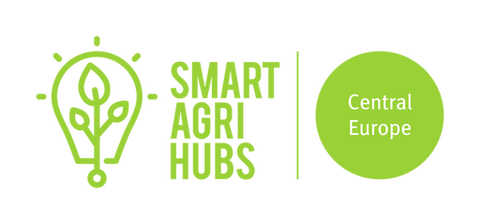

No more tripping over tractors on steep vineyard hills
All members in this team love good wine. Maybe that’s why we work together in this FIE where we develop an autonomous mower for vineyards. Such a robot mower is a necessary solution because chopping and mulching between vine rows is an important task, but also a repetitive and monotonous one prone to mistakes. Instead, such activities have to be optimised so that vines do not compete for water and nutrients from the soil between themselves.
So far, mowing has been executed by tractors driven by farmers. However, the use of such large machines can damage the fragile vine plants, which creates financial losses for wine farmers. Furthermore, based on our personal experience, people working in the vineyards might trip over the tractors and fall down the steep hill slopes vineyards tend to be on. We want to prevent that with our FIE.
Creating a mower robot is a promising solution because it is cost-effective, can cope with rough terrain and does not require rest breaks. Moreover, the technology we use is similar to that of a common autonomous lawn mower. The difference between our robot and the common one is that ours possesses more advanced navigating skills to deal with a variety of terrains and execute its tasks with precision.
On a typical day, we start by running simulations with the Robotic Operation System in the morning. Afterwards, we go out in to the field with our mower prototype and laptops in order to test the navigation and obstacle detection system. We take stock of the day’s results and continue to improve the robot.
Being part of SmartAgriHubs has been fruitful for our FIE. Our Digital Innovation Hub connected us to a wine grower association with whom we can discuss the practical advantages our solution offers and demonstrate it to wine growers. Thanks to this, our mower robot will be as user-friendly as possible. Additionally, our Competence Centre actively supports our FIE by sharing their expertise in Mechatronics and ICT.
In the end, our FIE will deliver an autonomously driven robotic mower that keeps the mezzanine area cut short in fruit orchards and vineyards, and in no small part thanks to the SmartAgriHubs network we have been embedded in.


Name of FIE
Vineyard Autonomous Mower Robot
Regional Cluster
Central Europe
Sector
Fruit
End user
Wine and orchard farmers
Product
A mowing robot
Contact
Peter Riegler-Nurscher
p.riegler-nurscher@josephinum.at
Partners
CFS Cross Farm Solution GmbH
DI (FH) Hubert Schrenk Ingenieurbüro für Elektrotechnik (Smartmotions)
Austrian Viniculture Association
Name of FIE Autonomous Greenhouses
Regional Cluster North-East Europe
Sector Fruit, Vegetables
End user Greenhouse farmer Horticulturalist
Product Software for a mobile app, A greenhouse robot
Contact Lukasz Lowinski
https://www.facebook.com/DIH-Agro-Polska-832726753752682/
Partners Freedomgrow (FG)
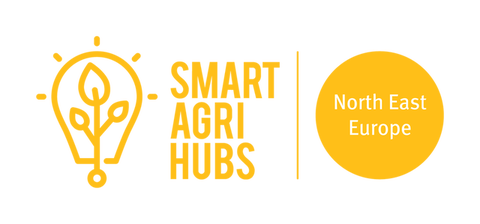
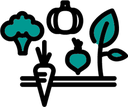

The robot that waters the greenhouse plants
If greenhouse growers water young plants a little too much, they might develop fungal diseases. The cultivation of exotic vegetables, fruits and flowers in greenhouses is a very delicate task and growers sometimes lack sufficient knowledge to execute this task effectively. Farmers have hectic days and are prone to mistakes which can have devastating consequences. With our FIE we aim to help them.
Instead of leaving things to human error, we create a robotic arm which executes precision tasks without much effort. The robotic arm is controlled by trained AI which gathers data acquired by sensors in the greenhouses. On this basis it makes decisions with regards watering, fertilising or de-weeding and treats each individual plant with the right action at the right moment. Given this, the farmer can lay back and think about what they want for dinner.
Our daily work requires a lot of problem solving. For example, we recently spent 6 hours attempting to synchronise the drives of individual sections of the robotic arm, and to sequence the movements specified in the software. We managed to do this, and as a result, the AI can precisely position the end of the arm in the indicated positions it wants it to. We even continue our work during the evening, where we exchange thoughts and ideas through social media. What binds us is our shared desire to solve day-to-day problems for end-users so that they do not have to worry anymore about small mistakes.
Being part of SmartAgriHubs has allowed us to tap in to a big pool of sector-related knowledge. Moreover, we have received a lot of support from the Digital Innovation Hub Agro Poland in determining the potential of selected technologies and testing different systems. Additionally, their observations are very useful, and we use it to further improve our autonomous greenhouse robot.
Our team is very committed to the project. We work 3000 km away from each other, but -thanks to modern technology- it feels like we’re in parallel rooms.



Name of FIE
Autonomous Greenhouses
Regional Cluster
North-East Europe
Sector
Fruit, Vegetables
End user
Greenhouse farmer
Horticulturalist
Product
Software for a mobile app, A greenhouse robot
Contact
Lukasz Lowinski
https://www.facebook.com/DIH-Agro-Polska-832726753752682/
Partners
Freedomgrow (FG)

Regional Cluster RC Italy & Malta
Sector Aquaculture
Product a mobile app for aquaculture management and to control production
End user Aquaculture operator
FIE contact Alberto Cavazzini; cvz@unife.it
Partners Nordi Giuseppino, DnaPhone, Coldiretti, University of Ferrara Dept. of Chemistry and Pharmaceutical Sciences
Something interesting The members of this FIE get to work in beautiful Mediterranean lagoons
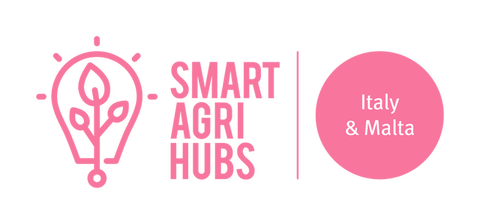

Regulating water quality on your phone
Imagine being a fish farmer in Italy on the Adriatic coast. After a day of hard work, you can finally visit the café and share tales with your friends when suddenly your smartphone buzzes – an app notifies you that the quality of water in your fish farm has drastically deteriorated, the app then presents you with a series of actions you can take in order to address this problem, you choose one and continue your conversation with your friends. This is what we envision.
Lagoon areas in Italy are dealing with a deterioration of water quality through water pollution and deterioration of nearby land. This seriously impacts the functioning of vulnerable coastal ecosystems and hampers the productivity of fish farms. In extreme cases, this leads to fish stock losses.
To help address this loss of productivity in fish farms, we develop an automated system which controls the quality of water at faming sites. This system collects information gathered through different (environmental, measurement, weather) sensors onto a dedicated cloud. For example, the environmental sensors measure under water oxygen levels, temperature, pH, saltiness and so forth. Simultaneously, the system informs aquaculture operators if and when critical situations are occurring in real-time through an app.
Currently, we are still in the early stages, conducting lab experiments, and stress-testing our prototype system. In the near future, our work will gradually shift to the lagoons, after which aquaculture operators will have to be taught how to operate the devices. Therefore, we plan to organize seminars and practical on-site demonstrations.
Throughout this process, we enjoy the support from Competence Centers and our Digital Innovation Hub. The Competence Centers map the issues faced by aquaculture operators and conduct research into the parameters which have to be monitored. Being part of SmartAgriHubs also informs us about other related experiments and grant opportunities. Soon aquaculture operators can react to critical situations with an espresso in one hand, and their phone in the other.


Regional Cluster
RC Italy & Malta
Sector
Aquaculture
Product
a mobile app for aquaculture management and to control production
End user
Aquaculture operator
FIE contact
Alberto Cavazzini; cvz@unife.it
Partners
Nordi Giuseppino, DnaPhone, Coldiretti, University of Ferrara Dept. of Chemistry and Pharmaceutical Sciences
Something interesting
The members of this FIE get to work in beautiful Mediterranean lagoons
Name of FIE Digital Grain Value Chain
Regional Cluster Scandinavia
Sector Arable farming
End user Arable farmers
And the rest of the grain value chain
Product A digital passport per grain lot
Contact Liisa Pesonen Jan Rundqvist
liisa.pesonen@luke.fi Janne.rundqvist@agroväst.se
Twitter: @ValuedGrain
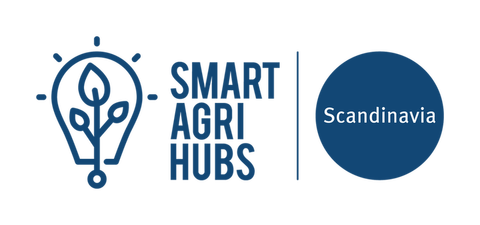

A Blind date and a Cereal Passport
How can we trust that the cereals we buy were produced in a sustainable manner? Both consumers and farmers struggle with this question. Consumers ask for increased transparency, whilst farmers desire fair prices to increase their profitability. Furthermore, farmers struggle with low profitability of such cereals as well as additional environmental pressures. Our FIE offers the solution: data!
We work to introduce ‘climate footprinted grain’. In practice, this means a validated digital passport per grain lot, which contains – among others- information about energy consumption, the use of fertilisers involved in producing the grain, and the emissions from transport. We calculate the carbon footprint per grain lot on the basis of data gathered from sensors on the farms. In this way, farmers know exactly what requirements they need to meet, and which ones they have already met, and can thus label their products as environmentally friendly. Thanks to this solution, farmers no longer have to sell their grain at a lower price and can become more profitable. the consumer knows that they are having an environmentally friendly breakfast.
Currently, we are in the starting phase of our experiment. This means we have a lot of Skype-meetings! We are working to facilitate the right interpretation of data because this is crucial to the success of the FIE. For instance, how do we calculate the fuel used by harvesting machines per grain lot? These are the type of questions we are addressing at the early stages of our FIE, so that we do not miss any important data at the start of the growing season.
The benefit of being a member of SmartAgriHubs is obvious to us. We have two Digital Innovation Hubs which support us. One helped us draft the FIE’s consortium agreement and connects us to experts on co-creation methods between farmers and consumers. The other assists us in finding the right stakeholders for workshops and interviews.
When we started this project, the partners involved in our team were unfamiliar with each other’s ideas and competences, yet we all wanted to create a well-functioning digital solution for farmers. It was like starting a happy family through a series of blind dates!


Name of FIE
Digital Grain Value Chain
Regional Cluster Scandinavia
Sector
Arable farming
End user
Arable farmers
And the rest of the grain value chain
Product
A digital passport per grain lot
Contact
Liisa Pesonen Jan Rundqvist
liisa.pesonen@luke.fi Janne.rundqvist@agroväst.se
Twitter: @ValuedGrain
